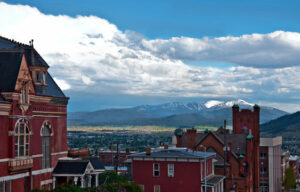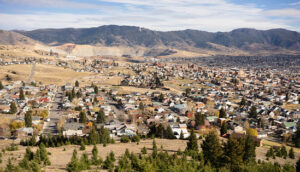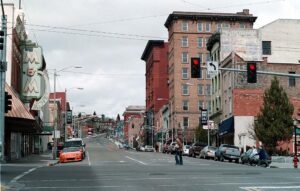The town of Billings, Montana was given its nickname, The Magic City, because of how it seemed to spring up so quickly, just like magic, when railroads began to come through the state. Like Billings, many cities within Montana were greatly impacted when railroads finally reached the state. Construction for the first railroad in the United States began in Baltimore in the 1820s, but it wasn’t until the late 1870s that they made their way to Montana.
The presence of railroads meant an influx of people, supplies and money to the state while also allowing local mines and other businesses to more quickly transport their goods, ultimately making more money and turning the wheel of prosperity in the generally undeveloped state of Montana. The major effects of these railroads are still evident in Montana today, even though many of them are not in use. Mining era towns like Butte and Anaconda still benefit from the presence of this form of transportation. Here is an abbreviated timeline of how the railroad expanded throughout Montana in about 40 years.
The First Line of Transportation
1880: When the first rails made their way to Montana, the state as we know it today was still a territory. On May 9, 1880, the first tracks were laid over the Continental Divide at the border between Idaho and Montana. The company that owned this line was the Utah and Northern Railway. On the eastern side of Montana, Northern Pacific Railway was causing the town of Billings to boom.
1881: At this point, Butte had been a modest yet profitable mining community for just about 20 years. Because of this appeal, the goal of the Utah and Northern Railway was to reach the city of Butte. The first train rolled into the city on December 21, 1881 after a 24 hour commute from Ogden, Utah, transporting about 40 passengers, thousands of pounds of machinery for the mine and a car full of oil. Several hundred people stood in the cold waiting to see the train arrive. This was the first dependable, year-round transportation source that Montana had ever had.
1882: Just a year after the first train reached the modest mining community of Butte, copper production was through the roof. In 1882, the district produced over 9 million pounds of copper.
Branching Off
1883: On September 23, 1883 a branch was completed between Butte, Anaconda and Garrison. Anaconda became a town in 1883 when Marcus Daily chose the location to build a smelter for his copper mine. Employees and families followed to work there.
1889: On November 8, 1889, Montana officially became the 41st state within the United States of America. Northern Pacific Railway built the “Butte short line” which branched off of their mainline west of Bozeman and went through Butte.
1892: Since he was sending so much copper from Butte to the smelter in Anaconda, Marcus Daly decided he wanted to have his own rail line. The Butte, Anaconda and Pacific Railway was founded in 1892 to carry copper ore, passengers and general freight.

Going East
1893: Richard A. Harlow, a Helena entrepreneur, wanted to build a railway east of Helena to the mining areas in central Montana. When he started the project it quickly failed because of the nationwide economic depression called the Panic of 1893.
1895: Harlow didn’t let the depression deter him, however, and he organized the Montana Railroad in 1895. By the time the track was complete, the mining communities it was servicing had passed their prime. Harlow decided they needed to continue to build in order to reach more people, businesses and cities.
1900: The Montana Railroad completed construction in the town of Harlowton, named after Richard A. Harlow.
1908: The Montana Railroad was purchased by Chicago, Milwaukee, St. Paul and Pacific Railroad and became part of their mainline across Montana. It eventually grew and included branches to Great Falls and several other places.

1911: Butte, Anaconda and Pacific Railway contracted with General Electric to electrify their mainline and branches with a few small exceptions.
1917: By this time the entire Chicago, Milwaukee, St. Paul and Pacific Railroad line from Harlowton into Idaho was electric.
This article includes a brief history of Montana railways and only touches on a few of the six different companies that put tracks down here. Not all of these lines are operable today and there are many other great transportation options around the state. But there are still multiple trains in use adding diversity to transportation and shipping options across the state. Today, two class 1 railroads serve the Port of Montana located in the Montana Connection Business Development Park. This excellent distribution transportation opportunity, as well as many other benefits, make our park the perfect place for your business.




